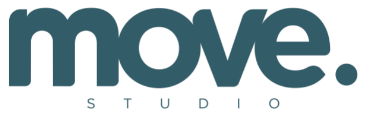Coworking Solutions Beginners Guide To Garuda / Pilates

Initial Private Sessions
We try very hard to make sure everyone is allocated a space in the right class for them, but the best way to ensure this is to have a one-hour private session with me, prior to starting classes. During this session I can assess your posture, identify your own specific needs, teach you the basics at your own pace and formulate a plan for you. Private Sessions normally take place in the Apparatus Studio. Fee: £40.
Pilates Takes Time!
Pilates is unlike other disciplines. As well as learning ‘the moves’, it’s about learning to engage and control muscles you may not know you have. Learning the terminology and learning about these new muscles can take a surprising amount of mental effort. After these initial weeks of concentration (which is one of the Pilates principles), you will start to feel you can work your body harder, as your brain understands what is required of the new muscles.
Pilates Post Injury/Rehabilitation
If you are doing Pilates for rehabilitation post injury, it is essential you have the all clear from your Dr or Physio to attend a class/session. We would strongly recommend everyone does a 1:1 before starting class, but especially so if you wish to do Pilates for rehabilitation.
Beginners Class (level 1)
Not all beginners are the same! Some beginners are very fit and may be used to running 50 miles a week (!) whereas some beginners have not exercised in 10 years. Therefore, our approach is to start everyone in a ‘level 1’ class and move people out of the class as they progress. Some may only need a few weeks in a Level 1 class, others years.
In the Level 1 class the fundamental Pilates exercises are taught – exercises that are often chosen by Physios for their patients who need rehabilitation post injury. These exercises are ideal for beginners as the load they place on the spine is exceptionally low. The exercises are performed slowly, deliberately, and mindfully. Therefore, the pace is ideal for a beginner. Some progressions are given, and you should expect to work up towards the harder variations over time. You might be the only ‘real beginner’ in the class when you start, but the advantage of this is the teacher will be able to give you a little more attention whilst you learn the basics, as the others will already know what they are doing.
Group Classes
Up to 6 clients per class, which has a defined level, eg Beginners, Level 1, Mixed Ability, Level 2. The class is planned according to the level of the class, adaptations and alternatives are given where necessary. The teacher will correct the class, and individuals where possible.
Breathing!
A lot of Pilates exercises are taught with a breath pattern. This is supposed to help you, but as a beginner this can make it more confusing. The breath is the last thing to worry about; in your first few sessions focus on the moves and locating the right muscles. The right breathing pattern will come with time, and if in doubt just breathe!
Terminology
There may be some new words and muscles to learn. A few are listed below.
Pelvic Floor – Most women who have had a baby will be familiar with this muscle, but if you are a man or have not had a baby then this may be a new muscle. It is located at the bottom of your pelvis as the name implies.
Transversus Abdominus – The deepest of the four abdominal muscles. You can find it by going onto all fours as if you were going to crawl. Then keeping your spine flat, let your belly go completely. Then very gently (you only need to put 30% effort into this one) draw your lower tummy upwards towards your spine.
Glutes – Short for gluteus maximus. They are found at the bottom of your back and are essentially your bottom muscles. They are a very strong big muscle, and their job is to take the legs behind your body (so are used in running) and to rotate the thigh bone outwards. They work best in functional moves, rather than being squeezed.
Centre – This is a dance term, as well as a Pilates principle. Essentially it refers to the muscles in the centre of your body – all those listed above.
Learning to listen to your body
‘No pain no gain’ is not something we go by in Pilates! If you feel pain at all during a session you must stop and tell your teacher immediately. Think of pain during the session as the bodies warning system. If you felt comfortable during a session but feel some mild discomfort or stiffness the next day, it’s likely this is a normal response to exercise called DOMS or delayed onset muscles soreness. Imagine if you went for a long run; you would expect your muscles to feel stiff and a little sore the next day. If in doubt, please speak to your teacher.
Everyone has been a beginner
We have all been there. New experiences can affect people in different ways. If you find yourself wondering what on earth is going on or why does everyone else seem to know what they’re doing, then please don’t worry. Speak to your teacher, ask questions and you will soon be up to speed. Everyone has been a beginner at some point!
Your Safety
Is the most important thing to us! Therefore, we reserve the right to decline to teach anyone, if we feel the class is not appropriate for you. In these exceedingly rare circumstances, we would work with you to try and accommodate you in an alternative way, which is more appropriate for your needs.
Thanks for reading, any questions, we are here to help. We warmly welcome you to class, and hope you enjoy!
